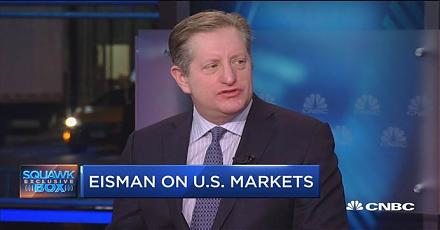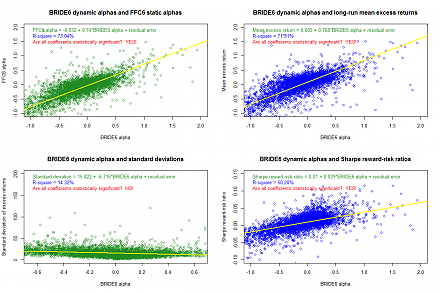

2022-05-25 09:31:00 Wed ET
robert shiller corporate finance fama and french baker and wurgler precautionary motive rene stulz financial lifecycle net stock issuance ipo seo jay ritter ivo welch impresario hypothesis
Net equity issuance can be in the form of initial public offering (IPO) or seasoned equity offering (SEO). This literature review focuses on the major IPO anomalies, the key empirical facts, and the lifecycle story of net equity issuance in regard to the precautionary demand for near-term cash. The typical corporation’s decision to issue new equity has implications for both its near-term cash constraint and capital structure.
The empirical literature suggests at least three major IPO anomalies. The first IPO anomaly refers to the initial IPO underpricing phenomenon that the first-day initial return (i.e. the premium of the closing price over the offering price) is significantly positive. For instance, Ritter (1984) finds an initial IPO return of 18.8% for a sample of 5,162 IPOs. Rock (1986) offers a theoretical explanation for the IPO underpricing anomaly within an adverse selection model. In this model, the uninformed investors rationally avoid the winner’s curse by requiring compensation for their IPO fractional allocation bias. This compensation in turn arises in the form of a positive initial return on the IPO event. A central implication of Rock’s (1986) model is that riskier IPOs should be underpriced to a larger extent. Beatty and Ritter (1986) find evidence in support of this analytical result.
In contrast to Rock’s (1986) explanation for the IPO underpricing anomaly that results from information asymmetries, Welch’s (1992) model suggests that the IPO market is subject to information cascades. In this alternative model, each investor’s demand for the net equity issuance not only depends on his or her valuation, but also on the demand by the other investors. Some investors who otherwise would subscribe for an IPO may decide not to do so when they discover that the other investors do not strongly demand this IPO. In order to avoid this problem, the issuer underprices the IPO to attract the first few buyers and in turn induces a positive cascade effect. As a result, all subsequent investors join this positive cascade such that the stock issuance receives the maximum amount of subscription (Ritter and Welch, 2002).
The second IPO anomaly refers to the cyclical patterns of both the IPO volume and average initial return over time. The hot-issue market arises in periods of large increases in the IPO initial return and volume, and the cold-issue market arises in periods of large decreases in the IPO initial return and volume. For instance, Ritter (1984) reports an unusually high 48.4% IPO average initial return in the hot-issue market from 1980 to 1981 in comparison to an unusually low 16.3% average IPO initial return in the cold-issue market from 1977-1979 to 1981-1982. Ritter and Welch (2002) suggest a market timing explanation for the hot-issue phenomenon. Firms tend to go public when they face a lower cost of equity. This window of opportunity offers greater exposure to public listing rules and disclosure requirements, better corporate governance standards, and some positive competitive influences of hostile takeovers.
The third IPO anomaly is the post-IPO long-term stock price underperformance (Ritter, 1991): IPO firms significantly underperform the plausible market benchmarks and several size and industry peers. With a large sample of 4,753 IPOs from 1970 to 1990, Loughran and Ritter (1995) document that the poor stock performance extends to 5 years after the IPO. Subsequent international studies confirm that the post-IPO long-term stock price underperformance is a global phenomenon. Shiller (1990) provides an informative behavioral explanation for the post-IPO long-term underperformance. This behavioral story suggests that investment banks promote IPOs by underpricing them to create excess demand just as many impresarios induce the audience to view the performer in the public favor by underpricing tickets to create a shortage illusion. While the IPO underpricing pattern leaves the impression that investment banks provide sound advice on the issuance, the post-IPO long-term stock price performance is likely to mean-revert once the market correctly interprets the firm’s fundamental prospect. The empirical evidence largely accords with Shiller’s (1990) impresario hypothesis: the Fama-French (1993) multifactor asset pricing model yields a significantly negative alpha of –0.48% per month for the technology bubble period from January 1990 to December 2000 (Ritter and Welch, 2002).
Teoh, Welch, and Wong (1998a, 1998b) examine the empirical nexus between earnings management and the long-term performance of IPOs and SEOs. Issuers that face high discretionary accruals due to active earnings management experience poor stock return performance in the post-IPO or post-SEO period. In particular, IPO issuers that land in the most aggressive quartile of active earnings managers experience a 3-year post-IPO stock return at least 20% less than the counterpart for IPO issuers that land in the most conservative quartile of earnings managers. Also, SEO issuers that adjust discretionary accruals to report higher net income before the SEO experience lower post-issue long-run excess stock returns. Specifically, discretionary current accruals increase before the SEO, peak in the SEO year, and then decline thereafter. This accruals pattern is the main root cause of corporate income fluctuations: net income increases before, peaks in, and then declines after the SEO year, despite low pre-issue and high post-issue operating cash flows. The negative relation between discretionary current accruals and future stock returns is stronger and more persistent among new SEO issuers. This strand of IPO and SEO literature echoes the key theme that firms often engage in active earnings management to exploit many investors’ naïve extrapolation of current corporate income prospects around the IPO or SEO year. These investors are too optimistic about pre-issue earnings potential and ignore key information that discretionary current accruals contain before the new stock issuance. Subsequent disappointment follows the eventual reversal of corporate net income after the IPO or SEO year.
The above twin studies confirm the naïve extrapolation hypothesis of Lakonishok, Shleifer, and Vishny (1994) that investors naively extrapolate current favorable sales and earnings prospects while subsequent stock returns often turn out to be subpar. Another important implication concerns the ubiquitous practice of earnings management that tends to occur just before major corporate events such as IPOs, SEOs, and open market repurchases (Teoh, Welch, and Wong, 1998a, 1998b; Gong, Louis, and Sun, 2008). While issuers tend to inflate discretionary accruals and so face more favorable income results in the pre-IPO or pre-SEO year, issuers tend to deflate discretionary accruals before open market repurchases and thus face more favorable income results afterward. This story receives a considerable amount of empirical support from the intersection of the financial, economic, and accounting disciplines (e.g. Sloan (1996), Dechow, Sloan, and Sweeney (1996), Dechow, Hutton, and Sloan (1999), Bradshaw, Richardson, and Sloan (2001), Richardson, Sloan, Soliman, and Tuna (2005)).
While IPOs have been underpriced by more than 10%, Purnanandam and Swaminathan (2004) find that the median IPO out of 2,000+ IPOs from 1980 to 1997 appears to be significantly overvalued at the offer price relative to industry peer price multiples. With alternative peer matching criteria, this overvaluation ranges from 14% to 50%. Cross-sectional regressions suggest that these overvalued IPOs yield high first-day returns but low long-term risk-adjusted returns. In comparison to the undervalued IPOs, these over-valued IPOs offer lower operating income margins, higher accruals, and higher analyst growth forecasts. Ex post, the high growth forecasts of these overvalued IPOs fail to materialize while their profitability declines from the pre-IPO levels. In this light, optimistic growth forecasts tend to misguide IPO investors, thus these investors pay insufficient attention to fundamental profitability when they evaluate IPOs.
Chambers and Dimson (2009) provide an out-of-sample test by empirically testing for the determinants of British IPO underpricing margins. Over a long sample period from 1917 to 2007, the IPO underpricing margin is substantial and pervasive and has somewhat increased from less than 5% from 1917 to 1945 to nearly 10% in the early-2000s. The post-war rise in IPO initial returns cannot be entirely attributed to changes in firm composition. The IPO underpricing margin has dramatically widened in spite of several structural improvements in regulation, disclosure, and underwriter prestige.
Liu and Ritter (2011) develop an IPO underpricing theory based on differentiated underwriting services and localized competition. Even though a large number of investment banks compete for IPOs, if issuers care about non-price dimensions, then the industry structure can be best characterized as a series of local oligopolies. Liu and Ritter (2011) test the central implications of this model on all-star analyst coverage, industry expertise, and other non-price dimensions. The main empirical result is that venture capitalists (VC) especially focus on all-star analyst coverage while the VC IPOs are substantially more underpriced when the issuer receives coverage from an all-star analyst.
With a set of ARMA-GARCH time-series models, Lowry, Officer, and Schwert (2010) demonstrate that the large volatility of IPO initial returns varies considerably over time. The dispersion of initial returns positively correlates with average initial returns from 1965 to 2005. This relation is more pronounced for the IPO bubble period from September 1998 to August 2000 and is persistently positive across all of the subperiods. This evidence suggests that underwriters have great difficulty in accurately valuing the shares of IPO companies. To the extent that the complexity of the underpricing problem in conventional firm-commitment IPOs contributes to higher initial return volatility, the IPO initial returns are more diffuse when a greater number of young, small, or high-tech firms that face severe information asymmetries go public during hot-issue markets such as the IPO bubble of the late-1990s. In sum, the evidence raises a serious issue about the efficacy of the firm-commitment IPO underwriting process because the volatility of IPO initial returns is extremely large. Lowry, Officer, and Schwert (2010) conjecture that alternative price discovery mechanisms such as auction methods could result in much more accurate price discovery in the pre-trading period for IPO companies.
DeAngelo, DeAngelo, and Stulz (2010) revisit the market timing thesis that corporate managers attempt to sell highly priced shares when stock market conditions permit (Loughran and Ritter, 1995, 1997; Baker and Wurgler, 2002). Their logit regressions help discover the determinants of the probability of a firm’s decision to conduct an SEO. The number of post-listing years serves as a measure of each firm’s lifecycle stage, and the market-to-book ratio and the recent abnormal stock return serve as measures of each firm’s market-timing opportunities. DeAngelo, DeAngelo, and Stulz (2010) find that the typical firm’s lifecycle stage differences have an economically larger impact on SEO probabilities than do differences in market timing opportunities. In the sample of 4,291 SEOs, 90% of the firms conduct no more than 3 SEOs over a 29-year period from 1973 to 2001, thus serial market timers are not the norm. Because the majority of firms would face a near-term cash constraint in the pre-SEO year with no increase in capital investment, debt issuance, or dividend payout, DeAngelo, DeAngelo, and Stulz (2010) infer that most firms conduct SEOs to meet a short-term cash need due to precautionary concerns. Lifecycle stage with a genuine near-term cash constraint affects much of the variation in the likelihood of SEO issuance while market timing motives are secondary considerations.
This analytic essay cannot constitute any form of financial advice, analyst opinion, recommendation, or endorsement. We refrain from engaging in financial advisory services, and we seek to offer our analytic insights into the latest economic trends, stock market topics, investment memes, personal finance tools, and other self-help inspirations. Our proprietary alpha investment algorithmic system helps enrich our AYA fintech network platform as a new social community for stock market investors: https://ayafintech.network.
We share and circulate these informative posts and essays with hyperlinks through our blogs, podcasts, emails, social media channels, and patent specifications. Our goal is to help promote better financial literacy, inclusion, and freedom of the global general public. While we make a conscious effort to optimize our global reach, this optimization retains our current focus on the American stock market.
This free ebook, AYA Analytica, shares new economic insights, investment memes, and stock portfolio strategies through both blog posts and patent specifications on our AYA fintech network platform. AYA fintech network platform is every investor's social toolkit for profitable investment management. We can help empower stock market investors through technology, education, and social integration.
We hope you enjoy the substantive content of this essay! AYA!
Andy Yeh
Chief Financial Architect (CFA) and Financial Risk Manager (FRM)
Brass Ring International Density Enterprise (BRIDE) ©
Do you find it difficult to beat the long-term average 11% stock market return?
It took us 20+ years to design a new profitable algorithmic asset investment model and its attendant proprietary software technology with fintech patent protection in 2+ years. AYA fintech network platform serves as everyone's first aid for his or her personal stock investment portfolio. Our proprietary software technology allows each investor to leverage fintech intelligence and information without exorbitant time commitment. Our dynamic conditional alpha analysis boosts the typical win rate from 70% to 90%+.
Our new alpha model empowers members to be a wiser stock market investor with profitable alpha signals! The proprietary quantitative analysis applies the collective wisdom of Warren Buffett, George Soros, Carl Icahn, Mark Cuban, Tony Robbins, and Nobel Laureates in finance such as Robert Engle, Eugene Fama, Lars Hansen, Robert Lucas, Robert Merton, Edward Prescott, Thomas Sargent, William Sharpe, Robert Shiller, and Christopher Sims.
Follow our Brass Ring Facebook to learn more about the latest financial news and fantastic stock investment ideas: http://www.facebook.com/brassring2013.
Follow AYA Analytica financial health memo (FHM) podcast channel on YouTube: https://www.youtube.com/channel/UCvntmnacYyCmVyQ-c_qjyyQ
Free signup for stock signals: https://ayafintech.network
Mission on profitable signals: https://ayafintech.network/mission.php
Model technical descriptions: https://ayafintech.network/model.php
Blog on stock alpha signals: https://ayafintech.network/blog.php
Freemium base pricing plans: https://ayafintech.network/freemium.php
Signup for periodic updates: https://ayafintech.network/signup.php
Login for freemium benefits: https://ayafintech.network/login.php
If any of our AYA Analytica financial health memos (FHM), blog posts, ebooks, newsletters, and notifications etc, or any other form of online content curation, involves potential copyright concerns, please feel free to contact us at service@ayafintech.network so that we can remove relevant content in response to any such request within a reasonable time frame.
2018-08-21 11:40:00 Tuesday ET

President Trump criticizes his new Fed Chair Jerome Powell for accelerating the current interest rate hike with greenback strength. This criticism overshado
2020-11-17 08:27:00 Tuesday ET

Management consultants can build sustainable trust-driven client relations through the accelerant curve of business value creation. Alan Weiss (2016)
2023-07-28 11:28:00 Friday ET

Lucian Bebchuk and Jesse Fried critique that executive pay often cannot help explain the stock return and operational performance of most U.S. public corpor
2017-04-01 06:40:00 Saturday ET

With the current interest rate hike, large banks and insurance companies are likely to benefit from higher equity risk premiums and interest rate spreads.
2022-11-05 11:32:00 Saturday ET

CEO overconfidence and corporate performance Malmendier and Tate (JFE 2008, JF 2005) argue that overconfident CEOs are more likely to initiate mergers an
2023-01-11 09:26:00 Wednesday ET

Addendum on USPTO fintech patent protection and accreditation As of early-January 2023, the U.S. Patent and Trademark Office (USPTO) has approved our U.S